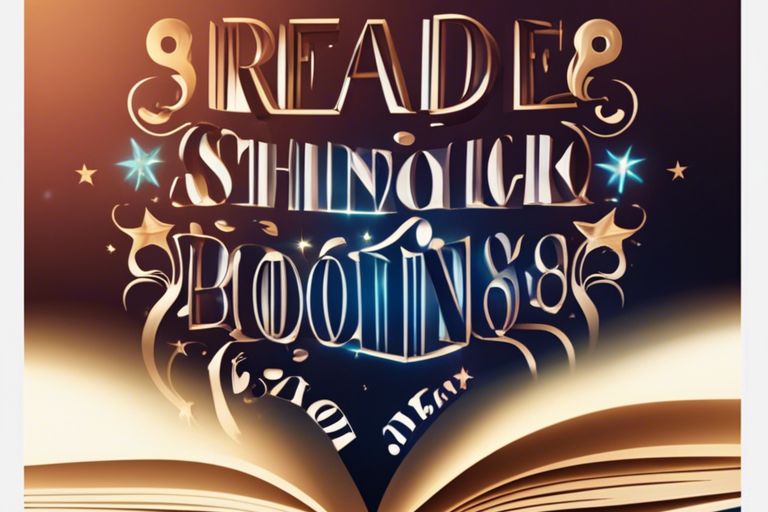Phonics is a fundamental building block in early reading development, helping children to recognise and decode sounds in written language. The Phonics Checklist serves as a valuable tool to ensure that young readers are equipped with important skills to become proficient in reading. This informative blog post will explore the key components of the Phonics Checklist and highlight how parents and educators can use it to support children’s literacy journey. By understanding and mastering these important phonics skills, early readers can build a strong foundation for lifelong learning and academic success.
Key Takeaways:
- Phonics is necessary for early readers: The Phonics Checklist emphasises the importance of teaching children phonics to help them become successful readers.
- Multi-sensory approach: Using a multi-sensory approach in teaching phonics can help children grasp the concepts more effectively.
- Focus on key phonics skills: The checklist highlights key phonics skills such as letter-sound correspondence, blending, segmenting, and decoding.
- Assessment tool: The Phonics Checklist can be used as an assessment tool to track a child’s progress in phonics skills development.
- Support for teachers and parents: This resource can provide support and guidance for both teachers and parents in helping children develop necessary phonics skills.
Foundational Phonics Skills
Letter Recognition and Letter Sounds
Letter recognition and letter sounds are crucial foundational phonics skills that early readers need to master. Children must be able to identify and differentiate between letters of the alphabet, as well as understand the sounds that each letter represents. This paves the way for developing the ability to sound out words and build vocabulary.
Phonological and Phonemic Awareness
Phonological and phonemic awareness involve the understanding of the sound structure of language. This includes being able to manipulate individual sounds (phonemes) within words, such as blending sounds together to form words or segmenting words into their individual sounds. These skills are fundamental for developing reading and spelling abilities in young learners.
Children with strong phonological and phonemic awareness tend to have an easier time learning to read and write. Activities such as rhyming games, syllable counting, and identifying initial sounds in words can help improve these crucial skills.
Developing Decoding Skills
Blending Sounds into Words
Blending sounds into words is a crucial skill for early readers to develop. This involves smoothly combining individual sounds together to form a word. Children can practise this by starting with simple consonant-vowel-consonant (CVC) words and gradually moving on to more complex words as they become more proficient.
Segmenting Words into Their Component Sounds
Segmenting words into their component sounds is the flip side of blending and is equally important in decoding skills. This skill requires the ability to break down a word into its individual phonemes or sounds. Children can enhance this skill by practising with various activities such as using manipulatives like sound boxes or tapping out the sounds in a word.
Advanced Phonics Techniques
- Digraphs and Diphthongs
- Multisyllabic Word Reading Strategies
Digraphs and Diphthongs
Digraphs and diphthongs are advanced phonics techniques that early readers can master to enhance their reading skills. Digraphs are pairs of letters that combine to represent a single sound, such as ‘sh’ in ‘ship’ or ‘ch’ in ‘chat’. Diphthongs are complex vowel sounds formed by the combination of two vowel sounds in a single syllable, like the ‘oi’ in ‘coin’ or ‘ou’ in ‘loud’.
Multisyllabic Word Reading Strategies
As far as reading words with multiple syllables, employing effective strategies is crucial for early readers. Breaking down multisyllabic words into smaller chunks, recognising prefixes and suffixes, and practising syllable division are necessary techniques. By approaching these words systematically and understanding the rules of syllable stress, young readers can improve their fluency and accuracy in reading longer, more complex words.
Application and Practice
Incorporating Phonics into Daily Reading
Consistency is key when incorporating phonics into daily reading. Start by choosing books that align with the phonics skills your child is currently learning. Encourage your child to sound out unfamiliar words using the phonics rules they have been taught. Make reading a fun and interactive experience by playing word games, practicing phonics flashcards, and discussing the sounds that different letters make.
Assessing Progress with the Phonics Checklist
Regularly assessing a child’s progress with the Phonics Checklist is imperative to tracking their phonics skills development. Set aside time to go through the checklist and mark off the skills your child has mastered. If you notice areas where your child is struggling, focus on practising those specific skills to reinforce learning. Do not forget, each child learns at their own pace, so be patient and supportive throughout the assessment process.
By using the Phonics Checklist to assess progress, you can identify areas where your child may need extra support and tailor your teaching approach accordingly. Celebrate their achievements and progress to keep them motivated and engaged in their phonics learning journey.
The Phonics Checklist – Essential Skills for Early Readers
The Phonics Checklist is a crucial tool for early readers to develop necessary skills in reading and writing. By following this comprehensive checklist, parents and educators can ensure that children master phonics principles effectively, paving the way for strong reading abilities and literacy. From mastering letter sounds to blending words and understanding spelling patterns, the checklist covers all foundational skills needed for successful reading comprehension. By utilising this resource, early readers can build a solid foundation in phonics that will support their literacy skills throughout their academic journey. The Phonics Checklist is an invaluable resource for fostering a love of reading and laying the groundwork for lifelong learning.
FAQ
Q: What is ‘The Phonics Checklist – Essential Skills for Early Readers’?
A: ‘The Phonics Checklist – Essential Skills for Early Readers’ is a comprehensive guide designed to help early readers develop important phonics skills.
Q: Why is phonics important for early readers?
A: Phonics is crucial for early readers as it helps them understand the relationship between letters and sounds, which is important for decoding words and improving reading fluency.
Q: How can ‘The Phonics Checklist’ help early readers?
A: ‘The Phonics Checklist’ provides a structured approach to teaching phonics, including activities and assessments to track progress and ensure mastery of important skills.
Q: Who can benefit from using ‘The Phonics Checklist’?
A: ‘The Phonics Checklist’ is suitable for parents, teachers, and educators looking to support early readers in developing strong phonics skills and improving reading abilities.
Q: How can I access ‘The Phonics Checklist – Essential Skills for Early Readers’?
A: ‘The Phonics Checklist’ can be accessed online through a digital platform or purchased as a physical book to support early readers in their phonics learning journey.












